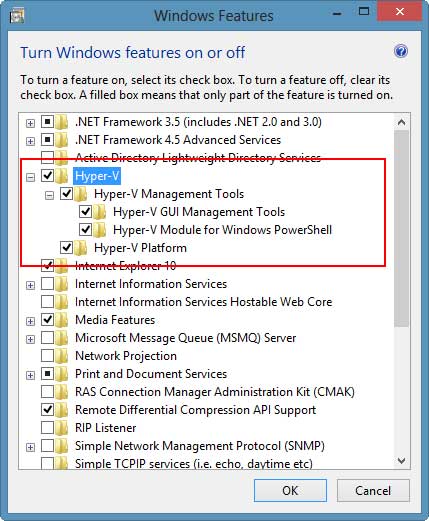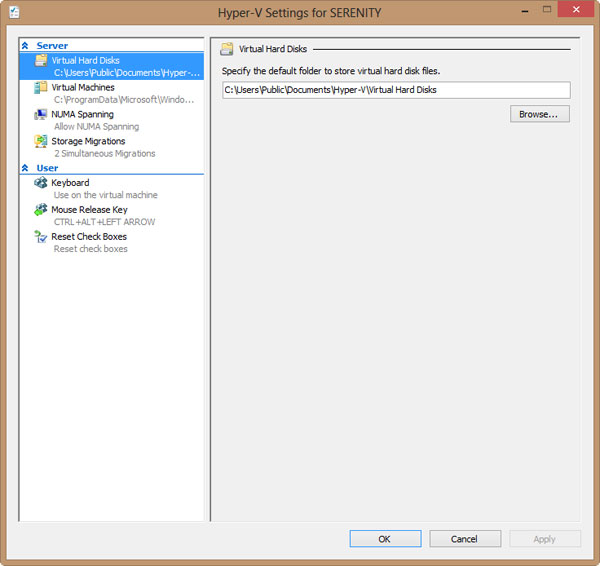Instructions for using Hyper-V on Windows 8 (Part 1)
TipsMake.com - One of the new features on Windows that is most noticeable is the Hyper-V virtualization program to meet users' need to create Windows virtual machines. The article will guide readers to activate and use the program on Windows 8.
First of all, the user's computer must support Hyper-V. This means that users need a 64 bit system with compatible hardware and BIOS for virtualization. In addition, we will need at least 4GB of RAM (or as much RAM as possible) if you want to run multiple virtual machines simultaneously. Fortunately, if you want to test a Server operating system, Windows 8 provides a Server Core feature that allows memory savings. In addition, Windows Server 2012 adds support for Hyper-V because users can install and configure the operating system with a GUI but can then remove this GUI and only keep the Server Core system.
Next, we need to configure Windows 8 to allow running Hyper-V. The program is not installed by default when installing Windows 8. Instead, users will need to activate a feature in Windows. First, open the Control Panel and click Programs . Finally, select Turn Windows features on or off .
A dialog box appears along with the available features of Windows. Scroll down to Hyper-V and check the items you want to install.

Add or remove other features if needed. Then click OK . The Hyper-V feature will require a reboot.

If you have a version that supports PowerShell, users will see a new module.

After restarting the computer, open Hyper-V Manager .


As you can see in the picture, there are no virtual machines created or configured. Click Hyper-V Settings to check the default configuration.

The basic settings that users often change are the default location for VHDs and virtual machines. We can create disks and virtual machines in multiple locations or simply keep as default. One more thing we might want to consider is to choose a path if we do a backup. After changing, click Apply or OK .
In the next lesson, we will explore some additional configurations and create a virtual machine.
You should read it
- Install Hyper-V Virtualization on Windows Server 2008 R2
- How to check if your computer is running Windows 10 Hyper-V?
- Install and configure Hyper-V Tools for remote management
- How to create a virtual machine in Windows Server 2012
- Create virtual machines with Hyper-V on Windows 8 and Windows 10
- How to rename Hyper-V virtual machines using PowerShell and Hyper-V Manager
 Instructions for changing settings in Wi-Fi Router
Instructions for changing settings in Wi-Fi Router Where does the data on 'cloud' really save?
Where does the data on 'cloud' really save? Ignore the Metro interface when starting Windows 8
Ignore the Metro interface when starting Windows 8 Things to know about IPv6 protocol
Things to know about IPv6 protocol 6 new features in Firefox 13 you should know
6 new features in Firefox 13 you should know Fun keyboard shortcuts for iPad keyboards
Fun keyboard shortcuts for iPad keyboards